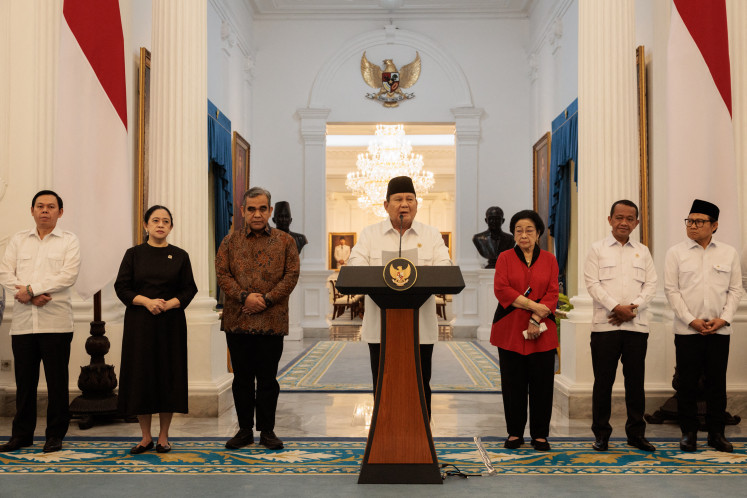Popular Reads
Top Results
Can't find what you're looking for?
View all search resultsPopular Reads
Top Results
Can't find what you're looking for?
View all search resultsEDITORIAL: Critical look at govt debt
Change text size
Gift Premium Articles
to Anyone
I
n an election year, many analysts, notably opposition politicians — tend to assess the government’s economic performance and its key indicators through the prism of politics. Take for example, the detractors who have been trumpeting that the government’s debt level is already at a critical state. They point out that within the first three years of President Joko “Jokowi” Widodo’s administration, government debt has nominally increased by the same amount that the previous government accumulated within five years.
The sheer level of government debt, totaling Rp 4.03 quadrillion (US$298.8 billion) as of February, up by over 13 percent from last year, has indeed raised concern because the deficit in the primary balance (government budget balance before interest payments), though decreasing from Rp 142.5 trillion in 2015 to Rp 125.6 trillion in 2016, rose again to almost Rp 130 trillion in 2017.
The standard government reply argues that the debt level is still less than 30 percent of the gross domestic product (GDP), way below the 60 percent ceiling allowed by the State Finances Law. The size of a country’s debt should be measured against the size of its economy. Moreover, most of the new debt has been used to fund massive infrastructure development, which has significantly accelerated since 2015. Indeed, everybody can easily see all of the physical infrastructure that has already been completed and that is still under construction. Judging by these parameters, the government’s indebtedness is not yet critical.
Nevertheless, the whole perspective of the debt level is not that simple. Even though government indebtedness is not yet critical, it could soon hit the warning level, unless tax revenues are not increased significantly. The problem is that even though the size of debt relative to GDP is still relatively small, compared to almost 90 percent in 2000, the government’s ability to service the increasing debt has weakened because of the disappointing performance of tax collection (still below 12 percent of GDP).
State budget implementation figures show that between 2012 (when the primary balance for the first time suffered a deficit) and 2016, the tax ratio remained virtually stagnant at between 11 and 12 percent of GDP while government debt increased steadily. Consequently, during that same period, debt interest payment as a share of total tax revenues jumped from 9.5 percent to almost 13 percent. Total debt as a proportion of total revenue also increased sharply from 168 percent in 2014 to 210 percent in 2015, up again to 226 percent in 2016 and 238 percent in 2017.
Since slashing new debt will slow down the pace of development, the most effective way to prevent a debt crisis is increasing tax revenues to raise the government capacity to service its debts. But increasing tax receipts requires reforms in both tax administration and taxation policies.
Hence, it is most imperative for the government and House of Representatives to amend the General Tax Administration System Law and strengthen the Taxation Directorate General to become an independent, powerful revenue agency.










